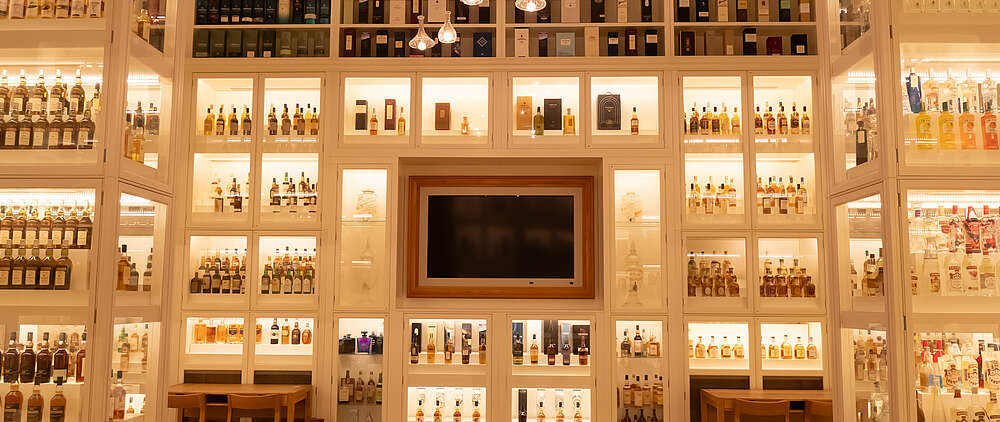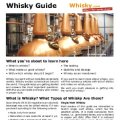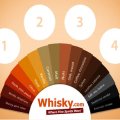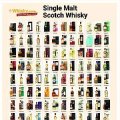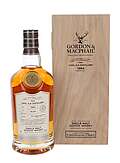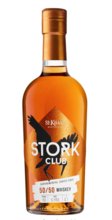Whisky consists mainly of water and alcohol. The rest (<1%) in whisky are flavours and aromas. When we speak of alcohol in the food context, we are referring exclusively to ethyl alcohol, which is also abbreviated to ethanol. The chemical formula is C2H5OH.
In whisky production, special care is taken to ensure that no methyl alcohol (methanol, CH3OH) is contained in the finished product. The yeasts used are bred in such a way that they do not produce methanol. The separation of the preliminary run during distillation provides a double safety.
The left-hand molecule in the right-hand diagram represents the ethanol molecule. The grey atoms are the carbon atoms (C), the red atom is the oxygen (O) and the white-grey atoms represent the hydrogen (H). To the right of the ethanol molecule is a water molecule (H2O).
A closer look at the ethanol molecule reveals that, apart from the oxygen atom, the molecule is symmetrical to a vertical plane between the carbon atoms. Only one hydrogen atom is replaced by an oxygen/hydrogen group (a so-called OH group). This OH group causes the ethanol molecule, which is electrically neutral overall, to exhibit local electronegativity differences (so-called dipoles d+, d-). Normal water molecules also show these dipoles, as they are also angled (angle 109°). These dipoles on the ethanol and water side now ensure that hydrogen bonds are formed between the molecules.
For this reason, the OH group is hydrophilic (water-loving). The rest of the ethanol, the C2H5 group, is lipophilic (fat-loving). Of course, the formation of hydrogen bonds is extensive, so that dipoles with reversed signs also attach to all dipoles in the upper drawing. In individual cases, these can be dipoles of water or alcohol molecules.
Whisky and Water - Background Knowledge
Do you always drink your whisky neat or do you dilute it with water? If you belong to the second group, this video gives you background knowledge in physics and chemistry. In another video, it's all about the taste experience.
Questions and Answers
Why does high-proof whisky become warm when diluted with water?
The OH groups of the ethanol form hydrogen bonds to the water molecules and this creates a heat of mixing that noticeably warms the mixture.
Why do some whiskies become cloudy when they are diluted with water?
Whisky contains ethanol-soluble components that are poorly soluble in water. If you increase the amount of water, it takes some time for these components to reattach to the alcohol (lipophilic) and the whisky to become clear again.
Why are individual whiskies cooled before filtering?
Most chemical substances are more soluble at a higher temperature than at a lower one. The cloudy substances come out of the cask wall into the whisky during storage. If the whisky is now cooled, these turbid substances precipitate and can be better absorbed by a filter.
Why do streaks form when you mix whisky with water?
This is not a chemical but rather a physical effect. The difference in density between water and alcohol, combined with different refractive indices, leads to the formation of streaks. If water and alcohol are mixed properly, no streaks are visible.
Why is it not possible to produce 100% ethanol by distillation?
Ethanol and water form an azeotrope (96% ethanol, 4% water) whose boiling point is below the boiling point of pure ethanol (78.15°C at 1 bar (760mm) and 95.6% alcohol content (by weight)). When boiling an ethanol-water azeotrope, the boiling point of 100% ethanol can therefore never be reached, as the 96/4 mixture boils first. With the addition of benzene (caution: toxic), 100% ethanol can be produced, because the benzene forms an azeotrope with the water and can thus transport the water. Nowadays, it is healthier to use molecular sieves, which can be used to produce almost 100% ethanol.
Some Physical Data
| Alcohol- concentration | Density (20°C, kg/l) | Refractive index to air (20°C, sodium light) | Relative viscosity to water (20°C) |
|---|---|---|---|
| 0% 1) | 0.9982 | 1.3333 | 1.000 |
| 10% | 0.9819 | 1.3395 | 1.498 |
| 20% | 0.9687 | 1.3469 | 2.138 |
| 30% | 0.9539 | 1.3535 | 2.662 |
| 40% | 0.9352 | 1.3583 | 2.840 |
| 46% | 0.9227 | 1.3604 | 2.837 |
| 50% | 0.9139 | 1.3616 | 2.807 |
| 60% | 0.8911 | 1.3638 | 2.542 |
| 70% | 0.8676 | 1.3652 | 2.210 |
| 80% | 0.8436 | 1.3658 | 1.877 |
| 90% | 0.8180 | 1.3650 | 1.539 |
| 100% 2) | 0.7893 | 1.3614 | 1.201 |
1) Pure water
2) Pure alcohol
If you have any additions or comments to this text, please send me an email at ![]() .
.




